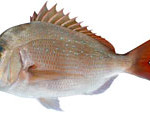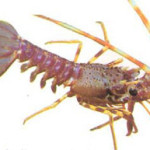
Tasmania has a spectacular coastline and diverse marine environment. Seagrass habitats in Tasmania, as elsewhere in the world, have been lost, fragmented and damaged by development and poor catchment management, through practices such as sewage and stormwater discharges, urban runoff, dredging, boating and land reclamation.
Seagrass meadows play a key ecological role in Australia’s coastal ecosystems and the loss of seagrass beds is considered to be one of the most serious issues in Australia’s marine environment. There are thought to be less than 70 species of seagrasses worldwide, about half of which are present around Australia’s 32,000-kilometre coastline. Six marine species of seagrass are recorded around Tasmania, while an additional two species occur in estuaries. The extent of seagrass beds is a good indicator of the ecological health of the marine environment. Healthy seagrass beds provide both habitat and food source, supporting biodiversity and stabilising the sea-bottom.
Seagrasses are highly specialised marine flowering plants adapted to soft sediments of nearshore environments and which live totally submerged in water. They come complete with leaves, a rhizome (an underground, usually horizontally-oriented stem) and a root system. They are found in marine or estuarine waters. Most seagrass species are located in soft (that is, silty or sandy) sediments.
Our knowledge of sea-grass distributions in temperate shallow water, to depths of about 10m is reasonably good. However, we are short of detail on deepwater (down to 20m) seagrasses. Areas subject to more extreme water movement, such as tidal or wave-induced, are also poorly studied, compared to seagrasses in more protected areas.
Both species of Amphibolis (A. antarctica and A. griffithii) are endemic to Australia but expect to find only A.antarctica distributed in the north and north eastern coastal waters of Tasmania. The common names for this seagrass are “sea nymph” or “wire weed”, and it grows on a variety of substrates, from sand-covered rock and gravel, to sandy bottoms and even clay normally in areas of high water flow,
Of the nine species of Posidonia that are currently recognised, eight are found in Australia but expect to see only one, P. australis (strapweed) in this region. This species is found at depths ranging from 2 to 35 m on substrates of fine sand with larger sized fractions.
The species Heterozostera tasmanica is widespread in temperate waters of southern Australia, and grows on sandy substrates where it can form dense meadows, as well as isolated plants.
The species within the genus Halophila tend to prefer warmer, tropical waters, but there are three species which tolerate the cooler southern waters. These are H. australis, H. decipiens and H. ovalis.
When recording Seagrasses, please do not try to count individual plants – you will be there forever (or at least till you run low on air!). We just need to know that it is present, preferably by position fixing on GPS, the depth range and an estimated size of the bed or meadow. And if you can, identify the genus, or better still, the individual species.








Social Profiles